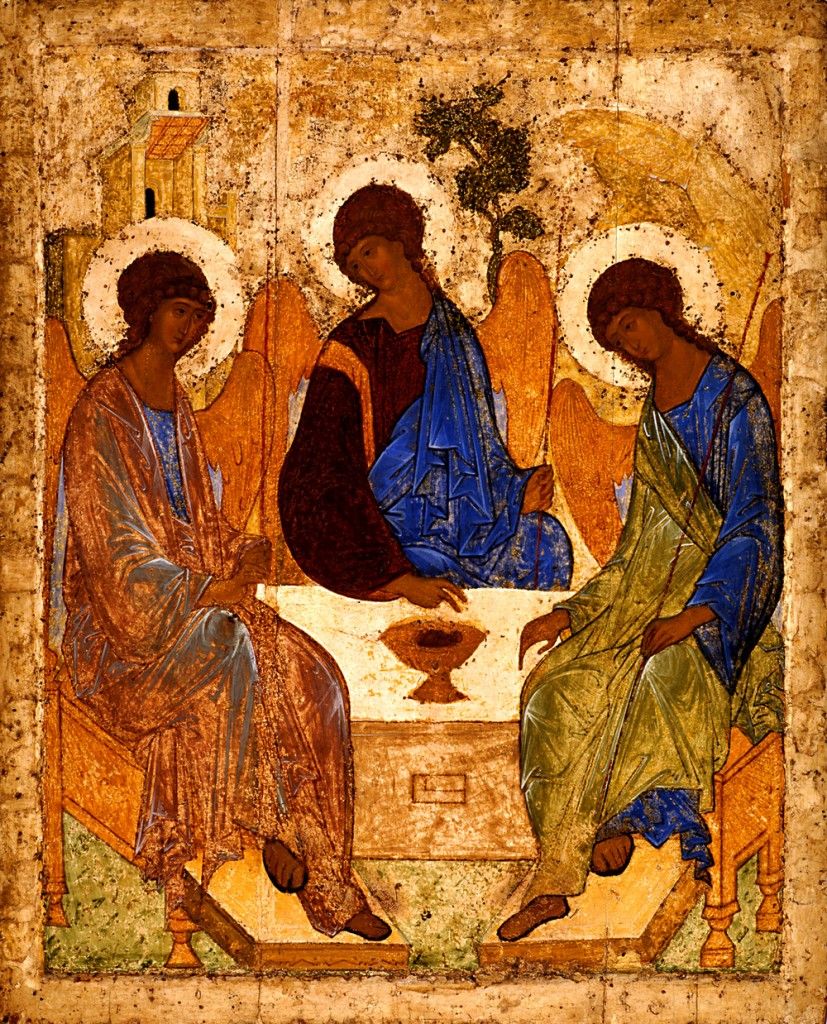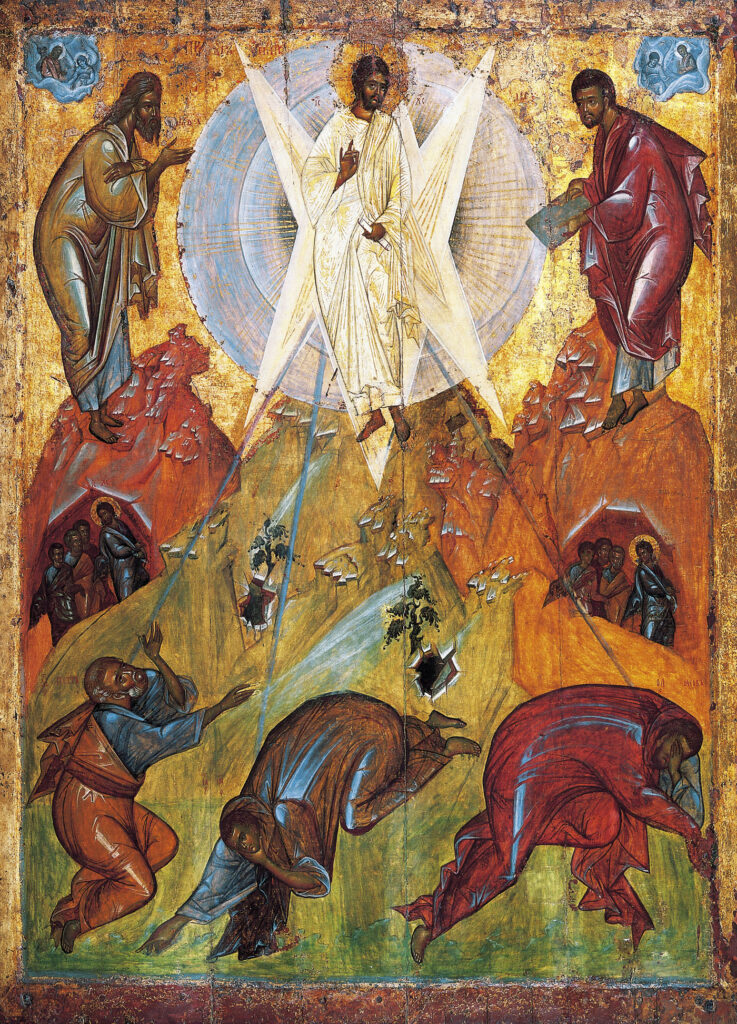Mikhail Ilyin. “Trinity” Rublev.
“It is impossible to not pay attention to the color of the Trinity, to the full of meaning and indelibly charming features of the rare harmony of color combinations, which are not found in any other ancient Russian icon. Rublev’s painting not only has the power of color, but also the power of light. Despite the fact that the icon had suffered inept renovations in the past, the paint emits like light that pervades all parts of the image. This light shines in white and bluish gaps. We see highlights and delicate transitions from shadow to light. We can enjoy each color separately or in combination with others located nearby. But we especially are drawn to Rublev’s light blue color – the famous and incomparable azure that is reminiscent of both the blue of the sky and the appearing of young and blooming flax cornflowers on the day of Pentecost among green rye.
Right are those who saw in Rublev’s Trinity the reflection of colors of Central Russia’s nature, especially the coloring of the early summer season, when verdant, shiny blossoming wheat sways on the hill, when bulky cloud-cathedrals swim over them across the blue skies with their purple shadows, when in the villages stand new log structures among the fresh golden wood chips, when the song of the lark rings through the depth of the skies, and the sun’s rays like golden needles penetrate the entire world, shimmering in the ripples of serene rivers and lakes.
The artist’s living art is not an aim in itself, but a direct expression of his feelings and thoughts. Therefore, it touches us so much and leaves a deep impression on our minds …”




